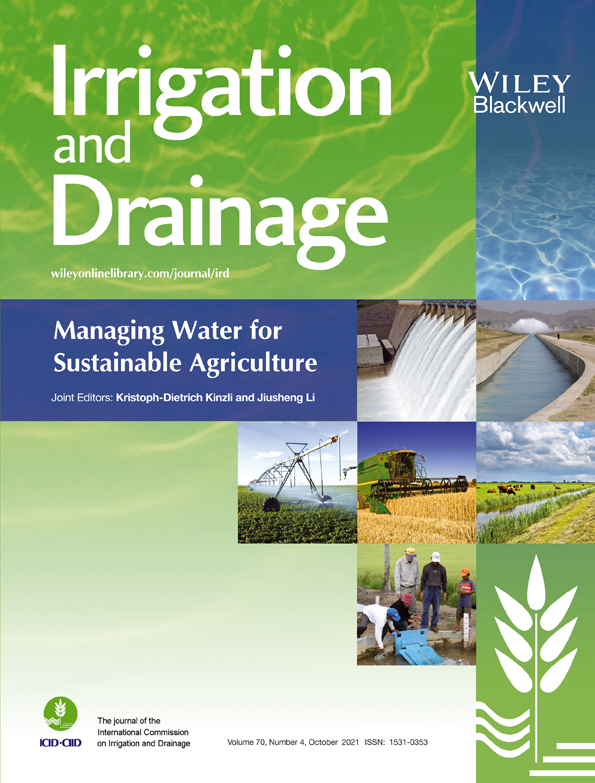Optimization of an effective quick coupling valve for pressurized irrigation*
Optimisation d'une vanne à couplage rapide efficace pour l'irrigation sous pression
Abstract
enQuick coupling valves are commonly used to make an easy and quick connection/disconnection of a sprinkler to/from the supporting pipeline. However, significant headloss occurs during the operation of the irrigation system by this valve. In the present study, water flow through a standard quick coupling valve was numerically modelled by computational fluid dynamics (CFD). In addition, different turbulence models were run to determine the effect of any component of the valve on flow characteristics. Comparison between numerical and observed data from the experiments on the prototype confirmed the validity of standard k-ε as a high precision model. Three-dimensional numerical simulation of the steady-state flow under different rates of flow showed that the spring had the least negative effect among the installed components inside the quick coupling valve. On the other hand, the body length of the valve, especially the length of the inlet part of the valve, played the main role in the pressure drop. Unexpectedly, the installed sealing O-ring reduced the headloss. Moreover, an effective modification was carried out on the components of an ordinary valve by increasing by 20 mm the length of the valve from the inlet side and modifications in trim elements. Finally, the findings revealed that 50% of headloss occurred in the developed valve compared to the ordinary type regardless of the flow rate.
Résumé
frLes vannes à couplage rapide sont couramment utilisées pour réaliser un sprinkleur de connexion/déconnexion facile et rapide à la canalisation de support. Cependant, une perte de charge importante se produit pendant le fonctionnement du système d'irrigation par cet objet. Dans la présente étude, le débit d'eau à travers une vanne à couplage rapide standard a été modélisé numériquement par la dynamique des fluides computationnelle (CFD). De plus, différents modèles de turbulence ont été utilisés pour déterminer l'effet de tout composant de la vanne sur les caractéristiques d'écoulement. La comparaison entre les données numériques et observées des expériences sur le prototype a confirmé la validité du k-ε standard en tant que modèle de haute précision. La simulation numérique tridimensionnelle de l'écoulement en régime permanent sous différents débits a montré que le ressort avait le moins d'effet négatif parmi les composants installés à l'intérieur de la vanne à raccord rapide. En revanche, la longueur du corps de la vanne, en particulier la longueur de la partie d'entrée de la vanne, a joué le rôle principal dans la perte de charge. De manière inattendue, le joint torique d'étanchéité installé a réduit la perte de charge. De plus, une modification efficace a été réalisée sur les composants d'une vanne ordinaire en augmentant la longueur de 20 mm de la vanne du côté entrée et en modifiant les éléments de garniture. Enfin, les résultats ont révélé que 50% des pertes de charge se produisaient dans la vanne développée par rapport au type ordinaire quel que soit le débit.




